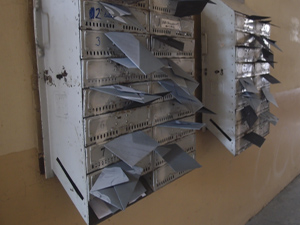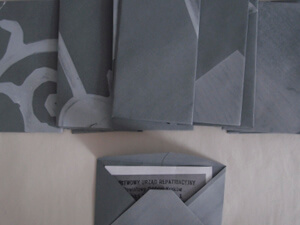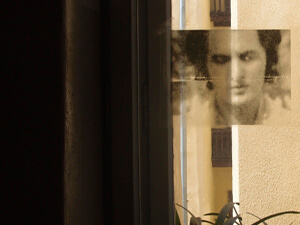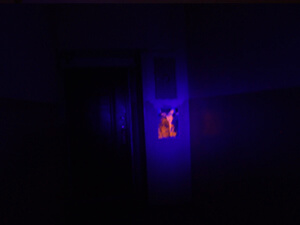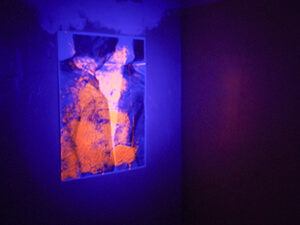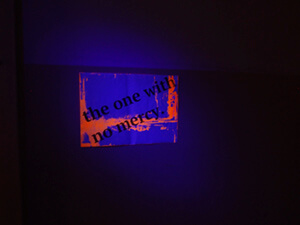Łobzowska
Action
Łobzowska 12, Kraków, 2018
The house first functioned as a collective home for a religious community. After the war the entire house was a temporary shelter for the post-war displaced, a place of state-controlled inhabitation, then reconfigured again as domestic space, willingly or unwillingly shared at times. In recent years, increasingly deserted, it housed an escape room and shoddy holiday rooms, and also offered refuge to the homeless, because it was easy to walk in from the street and hide in the long, unlit corridors in this dwelling without residents.
This was a low key, clandestine action. My audience and a collaborator was my nephew, Mikołaj. I distributed handmade envelopes in metal mailboxes, (barely) hanging on the wall in the main communal corridor. I placed photographs of my paternal grandmother on windows here and there, and pasted UV-responsive prints of figures and some words, perhaps to try out the possible position of the actual figure of the invisible agent, who (as I find out in the archives) observed my family in the 1970s. His reports are signed with a code name "Mikołaj". I placed fragments of archival documents about the post war shelter’s day to day operations inside each envelope, and felt excited by the prospect of the residents of the building receiving my correspondence.
But I had forgotten – even though it was an obvious state of affair underscored by the post-boxes’ numbers having been cancelled with strips of white paint - that at that point there were at hardly any inhabitants left – and so those letters were as if letters to ghosts.
I think that the action was just one part of multiple actions, or the performance of revisiting one’s childhood home to reassess (my) memory of it – which, somewhat puzzlingly, is of a building in a similar state of semi-ruin.
A couple of months later the mailboxes were gone, anyway.
